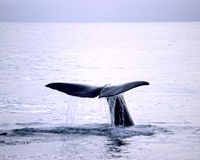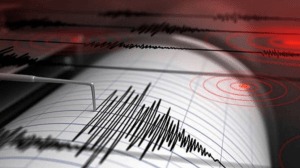The working group of the International Union for Conservation of Nature has approved the creation of 33 new areas of Importance for Marine Mammals, four of which cover Portugal, a source at the University of Porto revealed today. Of these 33 new areas, four cover the Portuguese territory, including the archipelagos of the Azores and Madeira.
In a statement, the Interdisciplinary Centre for Marine and Environmental Research (CIIMAR), which was part of the working group, clarifies that the recently approved Areas of Importance for Marine Mammals, designated as IMMAs, are the result of “a meeting of intensive scientific work.”
During this period, the researchers evaluated, compiled, and analysed the data relevant to the definition of these 33 new areas, which have already been added to the e-Atlas and are available for consultation and access.
Quoted in the statement, researcher Mafalda Correia, from CIIMAR, clarifies that the choices were based on criteria related to “the ecology and biology of the species,” and can be useful for science, society, and marine management.
One of the IMMA, which encompasses the Portuguese mainland coast, “has the dolphin as one of its target species,” which “is at serious risk of extinction on our coast,” says researcher Cláudia Rodrigues, from CIIMAR.
Another of the IMMA is that of Sado, which highlights the importance of the region for “the small resident population of bottlenose dolphins, which is highly dependent on the Sado estuary for vital activities, such as feeding, resting and breastfeeding their young,” states researcher Inês Carvalho, from the Gulbenkian Institute of Science.
Francisco Martinho, from the Association for Marine Sciences – APCM, also considers that “it would be important for this IMMA to work as a reminder of the urgency of joining efforts to conserve this unique population of dolphins in Portugal.”
The IMMA of the Azores, on the other hand, encompasses “the waters around all the islands up to the bathymetric depth of two to three thousand meters” and aims to protect the “high biodiversity of cetaceans in the region.”
This IMMA highlights the importance of the archipelago “as an area for feeding, reproduction, and migration of several threatened or vulnerable species, such as the blue whale, fin whale, and sperm whale,” points out researchers Mónica Silva, Laura Gonzalez, Sergi Pérez-Jorge and Margarida Rolim, from the University of the Azores.
In turn, the IMMA of Madeira has been extended into Spanish territory and covers the Canary Islands.
“This IMMA is home to a third of the global biodiversity of cetaceans, where resident populations of bottlenose dolphins, pilot whales, and beaked whales live,” says Luís Freitas, from the Madeira Whale Museum.
Filipe Alves, from The Marine and Environmental Sciences Centre (MARE), underlines the importance of the area for the “feeding, resting, socialisation and development of the offspring of at least 10 species of cetaceans.”
The researchers are now calling for these IMMAs to be considered in marine spatial planning, the creation of marine protected areas, and the carrying out of environmental impact assessments.
Worldwide there are currently 380 IMMAs and 185 areas of interest.
Samantha Gannon
info at madeira-weekly.com






